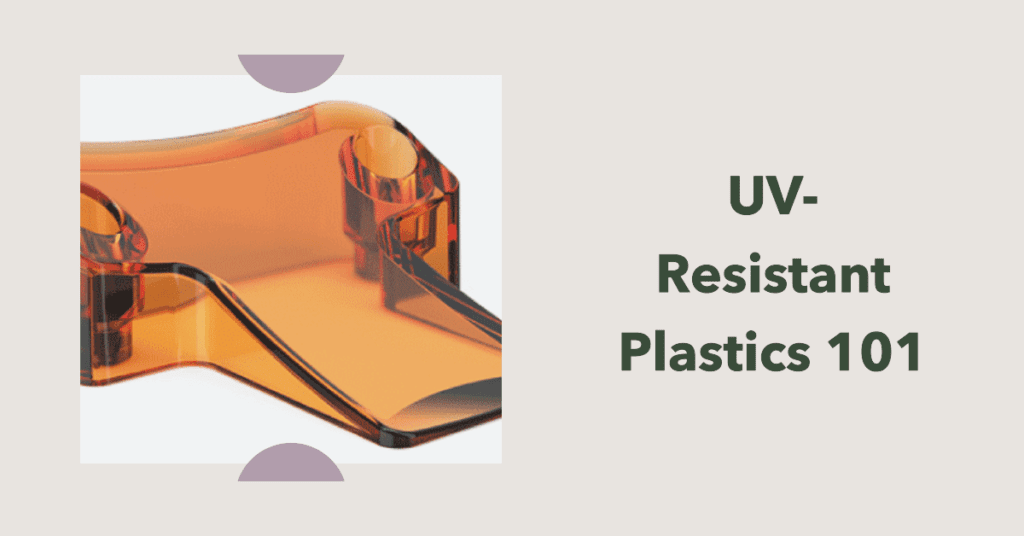
Ultraviolet (UV) radiation can wreak havoc on traditional plastics, causing them to discolor, weaken, and ultimately fail. As industries around the globe look for materials that can withstand harsh environmental conditions, UV-resistant plastics emerge as a robust solution. These durable plastics not only resist the harmful effects of UV radiation but also offer extended longevity. Dive deep into the world of UV-resistant plastics, their applications, and how they are reshaping the future of numerous industries.
Why UV Resistance in Plastics Matter?
The demand for materials that can endure environmental conditions and stand the test of time has intensified. Among these materials, plastics, known for their versatility and durability, have been an essential part of many industries. However, when exposed to Ultraviolet (UV) radiation, regular plastics tend to deteriorate. Understanding the significance of UV resistance in plastics is pivotal to appreciating their growing popularity and incorporation across sectors.
The Detrimental Effects of UV on Traditional Plastics
When traditional plastics are exposed to UV radiation, a series of photochemical reactions occur, leading to a breakdown of the polymer chains. This degradation can result in various adverse effects, both aesthetically and functionally:
- Discoloration: One of the most immediately noticeable effects of UV radiation on plastics is discoloration. Bright, vibrant colors might fade or change, giving an aged and worn-out appearance to the product.
- Material Embrittlement: Over time, prolonged exposure to UV radiation can cause plastics to become brittle. This brittleness translates to a loss in the material’s elasticity, making it more susceptible to cracks and breaks upon stress or impact.
- Degradation in Mechanical Properties: The molecular breakdown of plastics due to UV radiation leads to a decline in various mechanical properties, such as tensile strength, flexibility, and impact resistance. This degradation means that the plastic component or product won’t perform as effectively or last as long as it’s intended to.
Table 1: Effects of UV Radiation on Various Plastic Properties
| Property | Effects of UV Radiation |
|---|---|
| Color | Fading, Yellowing |
| Elasticity | Reduction, Leading to Brittleness |
| Tensile Strength | Decreased Strength |
| Flexibility | Reduced Flexibility |
| Impact Resistance | Decreased Resistance |
UV Resistance Matters for Protecting Investments?
For businesses and consumers, the products they invest in are expected to deliver performance and durability. The premature degradation of plastic products due to UV radiation can have several implications:
- Financial Implications: Replacing UV-damaged products frequently can be costly. Consider outdoor furniture, for instance. If the plastic components of the furniture degrade within a year of purchase, consumers will be inclined to replace them, leading to added expenses.
- Operational Setbacks: In industrial settings, UV-degraded plastic parts can lead to operational inefficiencies. Machines or systems that rely on these parts might experience downtime, leading to reduced productivity.
- Reputation Risks: Brands that produce plastic products, that fail to stand up to UV radiation, can suffer reputational damage. Negative customer reviews and feedback can deter potential customers and affect sales.
- Environmental Concerns: The rapid degradation and replacement of plastic products contribute to environmental waste. UV-resistant plastics, by increasing the lifespan of products, can help in reducing plastic waste and promoting sustainability.
The Chemistry Behind UV-Resistant Plastics
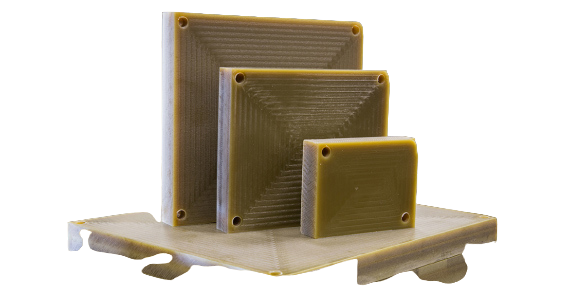
UV-resistant plastic part
The modern world is becoming increasingly reliant on plastics due to their adaptability and versatility. However, to ensure that these plastics remain functional and reliable, especially when exposed to UV radiation, understanding their underlying chemistry becomes paramount. So, what makes UV-resistant plastics different at the molecular level?
At its core, plastic is a polymer – a large molecule made up of repeating units called monomers. These polymers consist of long chains of carbon atoms and other elements. However, when exposed to UV radiation, these chains can absorb the energy and cause bond breakage, resulting in degradation. This deterioration is due to the high energy carried by UV rays, which can disrupt the stable bonds present in the polymer chain.
- Photo-oxidation: This is the primary mechanism behind the UV degradation of plastics. The energy from the UV rays causes the polymer to react with oxygen, leading to oxidative breakdown. This results in chain scission, cross-linking, or formation of other undesired molecules, all of which weaken the plastic.
What Are the UV Stabilizers?
To counteract the detrimental effects of UV radiation, chemists have designed additives known as UV stabilizers. These compounds, when added to plastics, can absorb, reflect, or scatter the harmful UV rays, preventing them from reaching the polymer chains.
- UV Absorbers (UVA): These compounds function by absorbing UV radiation and converting it into a less harmful form of energy, typically heat. They act like sunscreen for plastics. Common UVAs include benzophenones and benzotriazoles.
- Hindered Amine Light Stabilizers (HALS): HALS neutralize the free radicals produced during photooxidation. Instead of absorbing UV radiation, they deal with the damaging by-products of UV exposure, providing prolonged protection.
- Quenchers: These compounds dissipate the energy absorbed by the polymers during UV exposure. They efficiently convert the excited energy states of the polymer back to stable ground states without causing damage.
Incorporating UV Resistant Additives in Plastics
To ensure the efficacy of the UV stabilizers, they must be thoroughly mixed with the base polymer. This is typically done during the melt-compounding stage of plastic manufacturing. The percentage of UV stabilizers added can vary based on the intended application and desired lifespan of the plastic product. For instance, outdoor plastics, like those used in garden furniture or automotive parts, might have a higher stabilizer content than indoor plastics.
Interestingly, some polymers inherently exhibit a degree of UV resistance without the addition of external stabilizers. For example:
- Polycarbonate (PC): Polycarbonate inherently filters out most UV radiation below 385 nm. However, for prolonged outdoor applications, additional stabilizers are usually added to enhance its UV resistance.
- Polyethylene Terephthalate (PET): PET also has inherent UV resistance due to its molecular structure, which absorbs and disperses UV radiation efficiently. Nevertheless, in applications demanding extensive UV exposure, additional stabilizers are employed.
Distinguishing Between Regular and UV Resistant Plastics
The widespread use of plastics in various industries has led to a plethora of types and variations, each tailored to specific applications. One of the essential categorizations of plastics is based on their UV resistance capability. But how can one differentiate between regular and UV-resistant plastics? And why is it crucial to do so?
Table: Distinguishing Features and Aspects of Regular vs. UV Resistant Plastics
| Features/Aspects | Regular Plastics | UV Resistant Plastics |
|---|---|---|
| Observable Impact of UV | ||
| Discoloration | Tend to yellow or fade | Maintain original hue |
| Surface Chalking | Powdery residue forms due to polymer breakdown | Smooth surface |
| Brittleness | Increase, becoming more susceptible to cracking | Maintains original flexibility |
| Tensile Strength | Diminishes | Remains stable |
| Properties | ||
| Long-term Color Stability | Degradation over time | Preserved even with prolonged sunlight exposure |
| Preservation of Mechanical Properties | Tends to degrade | Remains relatively stable |
| Surface Condition | Surface chalking or cracks might appear | Smooth surface maintained |
| Importance of Additives | ||
| Role of Additives | Minimal or none for UV protection | Contains UV absorbers, quenchers, and ensures uniform distribution for consistent protection |
| Testing and Certification | ||
| Accelerated Weathering Tests | Might degrade significantly | Shows minimal degradation |
| Certifications | May not have undergone UV resistance testing | Certified by recognized organizations like ASTM |
| Practical Applications | ||
| Outdoor Furniture | Fades and weakens over time | Retains color and strength |
| Automotive Components | Degradation with sunlight exposure | Ensures longevity and aesthetics |
| Greenhouses and Agricultural Films | Compromises functionality over time | Maintains functionality and UV resistance |
This table summarizes the main distinguishing features between regular plastics and UV-resistant plastics, providing a clear, concise, and easy-to-understand comparison.
The Art of UV Resistant Plastics Machining
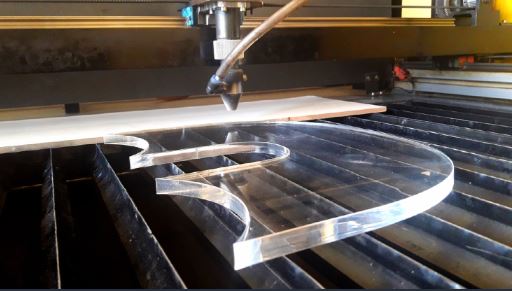
Acrylic plastic machining
The growing demand for UV resistant plastics, given their incredible longevity and resistance to ultraviolet radiation, has placed a renewed focus on the intricacies of machining these materials. Much like other plastics, UV resistant variants also have their unique set of challenges and considerations during the machining process.
Understanding the unique attributes of UV-resistant plastics is the first step toward effective machining. Some of these characteristics include:
Pre-Machining Considerations
Before diving into the machining process, a few preparatory steps and considerations ensure a smooth operation:
- Material Selection: While all UV-resistant plastics provide UV protection, the type of plastic (e.g., acrylic, polycarbonate) will influence machining strategies.
- Tool Selection: Specialized tools, designed explicitly for plastics, yield better results. Tools with high rake angles and sharper cutting edges reduce the chances of chipping or melting the material.
- Cooling Systems: UV-resistant plastics can be sensitive to heat. Therefore, a cooling system or the use of coolants might be necessary during machining to prevent melting or distortion.
Machining Techniques and Best Practices
To achieve the best results when machining UV-resistant plastics, it is essential to adhere to specific techniques and practices. High-speed machining, with higher spindle speeds and feed rates, can produce cleaner cuts due to the softer nature of plastics compared to metals. Secure clamping is also crucial to prevent any movement during machining, but excessive force can cause deformation or breakage, so a balanced approach is necessary. When drilling, withdrawing the drill frequently to remove chips and reduce heat buildup is advisable, while using a sharp tap and employing frequent back-turning can prevent material binding during threading.
Post-Machining Processes
Once the initial machining is complete, several finishing processes can enhance the product’s aesthetics and performance, such as polishing and annealing.
- Polishing: Given the visibility and aesthetic demand of UV resistant plastics in applications like eyewear or outdoor furniture, polishing can help achieve a clear, mirror-like finish.
- Annealing: This process involves heating the plastic to a specific temperature and then slowly cooling it. Annealing helps relieve internal stresses caused during machining and improves the material’s overall structural integrity.
Challenges in UV Resistant Plastics Machining
UV resistant plastics are durable and long-lasting, making them ideal for harsh environments. However, machining these materials can be challenging.. Thermal considerations are essential as plastics are good insulators and tend to retain heat, leading to melting or warping if not managed correctly. Material waste and tool wear are also issues that need to be addressed during the machining process to ensure optimal results.
To overcome these challenges, specific techniques must be employed. High-speed machining, specialized tools, and cooling systems can help produce cleaner cuts without causing damage. Post-machining processes like polishing and annealing can improve the material’s aesthetics and performance, while frequent tool changes or sharpening can address tool wear issues.
Practical Applications of UV Resistant Plastics
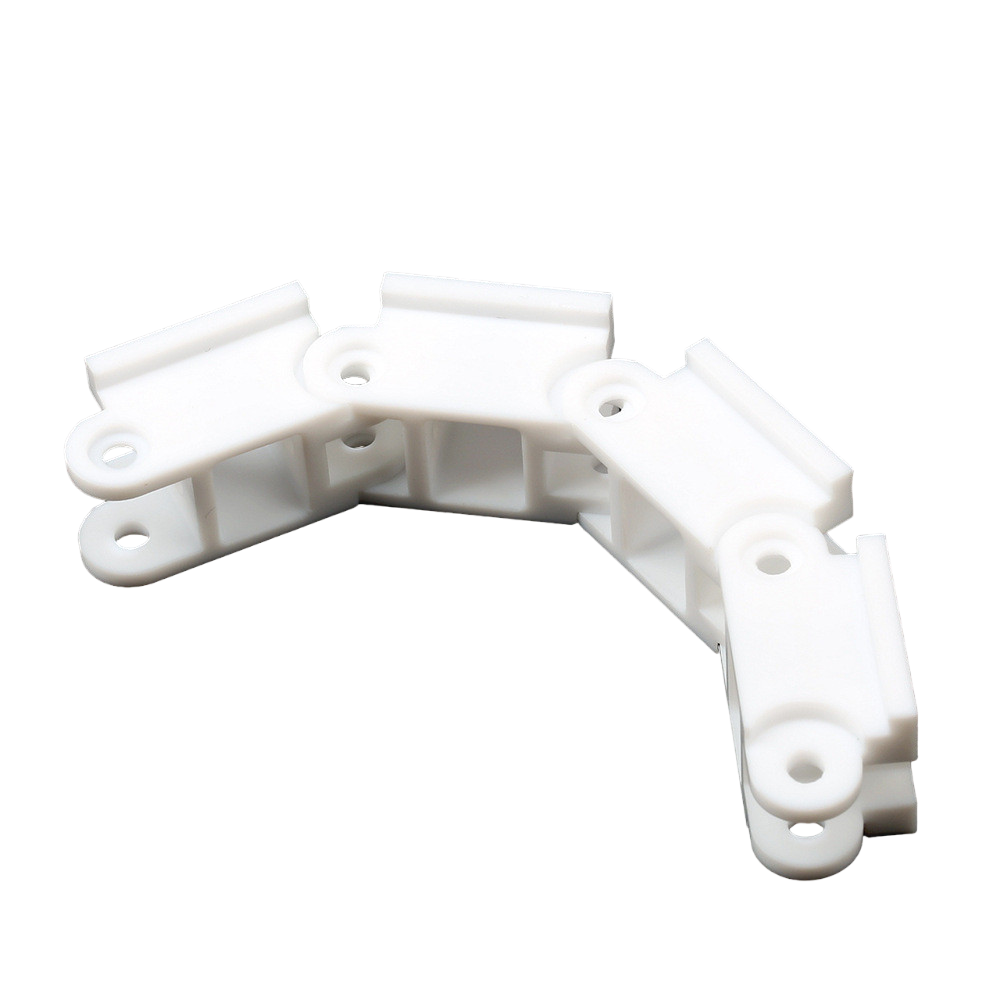
A custom part made of UV-resistant plastic ( PTFE)
UV-resistant plastics have carved out a significant niche in various industries due to their remarkable ability to withstand ultraviolet radiation’s adverse effects. By maintaining their structural integrity and appearance over time, even under constant UV exposure, these plastics are well-suited for several critical applications. Delving into these applications gives us insights into the vast potential and versatility of UV-resistant plastics.
1. Automotive Components
UV resistant plastics are a popular choice for the automotive industry due to their ability to withstand environmental factors. Bumpers, exterior trim, sunroofs, and windows require materials that won’t degrade, discolor, or lose strength. UV resistant plastics provide a perfect solution for these parts that are directly exposed to sunlight.
UV resistant plastics are a durable and reliable solution for automotive components, ensuring longevity and maintaining clarity. They prevent yellowing over time and remain strong even under the harsh effects of UV radiation. Their incorporation in the automotive industry has dramatically improved the performance and aesthetics of vehicles.
2. Building and Construction
The building and construction sector has also embraced the advantages of UV resistant plastics. UV resistant plastics prevent discoloration, warping, and degradation, ensuring windows remain functional and aesthetically pleasing for years. Also, skylights or transparent roofing panels made from these plastics allow natural light in without compromising on longevity or visual appeal.
3. Signage and Displays
UV resistant plastics are essential in maintaining the longevity and aesthetic appeal of outdoor signage and displays. Billboards, outdoor advertisements, and informational displays can remain vibrant and clear for more extended periods without fading or degrading under constant exposure to sunlight.
These plastics are an excellent solution for maintaining the visual appeal of such displays and ensuring that they remain legible and intact for visitors in places like zoos, parks, or historical sites.
4. Marine Applications
UV resistant plastics have various applications in the marine industry due to their ability to withstand the harsh marine environment. Boat components, such as hatches, windows, and trim, made from these plastics resist the sun’s effects, preventing yellowing, cracking, or degradation. Additionally, marine equipment, such as buoys, markers, and other items made from UV-resistant plastics, last longer, ensuring safety and functionality.
Table: UV Resistant Plastics in Key Industries
| Industry | Key Application Areas |
|---|---|
| Outdoor Furniture | Patio sets, loungers, planters |
| Automotive | Bumpers, sunroofs, trim |
| Eyewear | Lenses, frames |
| Agriculture | Greenhouses, mulch films |
| Construction | Window frames, roofing |
| Signage | Billboards, informational displays |
| Marine | Boat components, marine equipment |
Prolean’s UV-Resistant Plastic Machining Services
In the domain of UV-resistant plastics, Prolean has carved out a reputation for unparalleled quality, precision, and innovation. The company’s services in machining these plastics are marked by an integration of advanced technology, a skilled workforce, and sustainable practices.
Table: Prolean’s UV-Resistant Plastic Machining Services
| Aspect | Key Feature | Description |
|---|---|---|
| Advanced Machining Technology | Cutting-Edge Equipment | We use the latest CNC machining for precision and quality. Equipment is routinely updated and calibrated. |
| Incorporation of Automation | Integration of robotic systems and automated processes minimizes human error and ensures standard product quality. | |
| Skilled Workforce | Highly Trained Technicians | Our team comprises experts in UV-resistant plastics machining, with intensive training and vast experience. |
| Continual Learning | We prioritizes regular workshops and training sessions to update its team with the latest technological advancements. | |
| Sustainability at the Core | Eco-Friendly Machining | Our machinery operates efficiently, consuming less power and producing minimal waste. By-products are either recycled or responsibly discarded. |
| Resource Conservation | The machining processes are optimized to reduce waste and conserve materials, ensuring efficient use of every plastic sheet. | |
| Quality Assurance and Control | Rigorous Testing | After machining, each product is thoroughly tested for UV resistance and other quality standards. |
| Feedback Loop | We maintains a feedback system from quality control to the production team, emphasizing continuous improvement. |
Conclusion
The significance of UV-resistant plastics in today’s world cannot be understated. As we grapple with the dual challenges of sustainable development and an ever-increasing demand for durable products, UV-resistant plastics offer a promising solution. Their ability to withstand the degrading effects of ultraviolet radiation means longer-lasting products, reduced waste, and less frequent replacements. From the intricacies of their chemical makeup to their pivotal role in various industries, these plastics are proving to be revolutionary.
Moreover, the advancements in machining these plastics, as exemplified by companies like Prolean, ensure that we are not just producing high-quality materials but doing so in a manner that is mindful of our planet. As technology continues to evolve and our understanding of UV-resistant plastics deepens, it’s evident that they will play an even more integral role in shaping a sustainable, durable, and brighter future.
FAQ’s
What makes UV resistant plastics different from regular plastics?
UV resistant plastics are infused with UV stabilizers or additives that absorb or reflect harmful UV rays, preventing degradation and prolonging their lifespan.
Are all UV resistant plastics equally effective against UV radiation?
No, the effectiveness can vary based on the type of plastic and the amount and type of UV stabilizer used.
How can one test the UV resistance of a plastic material?
Accelerated weathering tests and UV spectroscopy are common methods to evaluate UV resistance.
Do UV resistant plastics look different from regular plastics?
Initially, they might look similar, but over time, regular plastics degrade and discolor under UV exposure, whereas UV resistant plastics maintain their integrity and appearance.
Are UV resistant plastics environmentally friendly?
While UV resistant plastics are more durable and may result in reduced waste, the environmental impact depends on the production methods and disposal practices. However, there are ongoing efforts to produce them using eco-friendly techniques.
Can UV resistant plastics be recycled?
Yes, many UV resistant plastics can be recycled, but the recycling process might vary depending on the type of plastic and the UV stabilizers used.

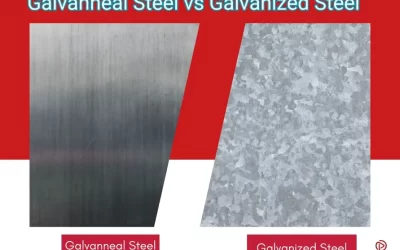
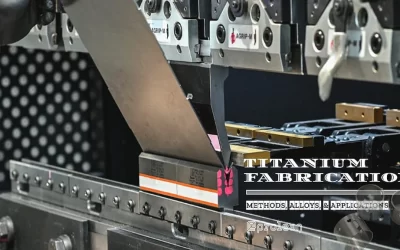
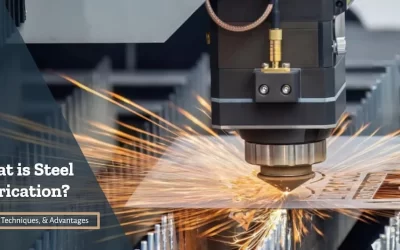
0 Comments